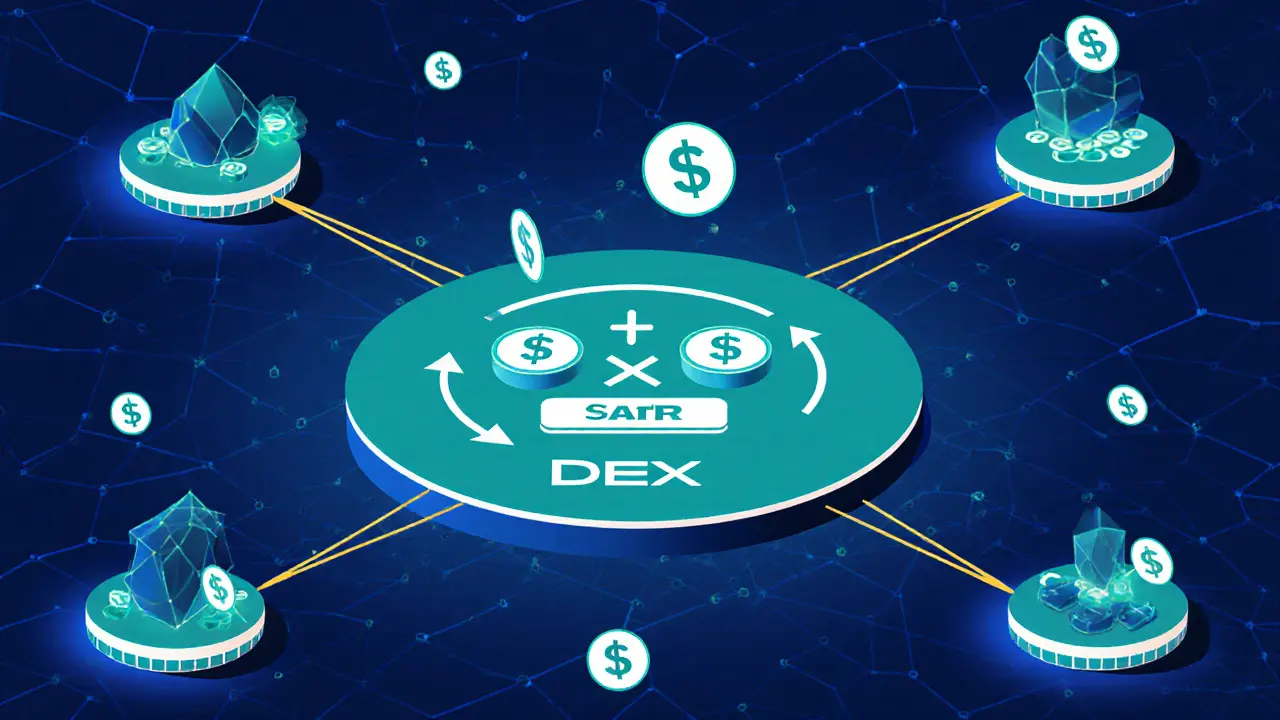Saber DEX: What It Is, How It Works, and What You Need to Know
When you trade crypto on Saber DEX, a decentralized exchange built specifically for the Solana blockchain. Also known as Saber, it lets users swap tokens without intermediaries—faster and cheaper than most other platforms. Unlike generic DEXes that struggle with Solana’s speed, Saber was built from the ground up to handle high-volume, low-fee trades between stablecoins and other Solana-based assets.
Saber DEX is part of a bigger ecosystem called Solana, a high-performance blockchain designed for fast, low-cost transactions. It works closely with other tools like liquidity pools, smart contracts that hold trading pairs and allow automated exchanges. You’ll find these pools used by projects like USDC, a stablecoin pegged to the U.S. dollar and widely traded on Solana, and SOL, Solana’s native cryptocurrency. Saber’s special trick? It reduces slippage on stablecoin swaps by using dynamic pricing, which keeps prices stable even during big trades.
People use Saber DEX because they don’t want to pay $5 in fees just to swap USDC for USDT. On Ethereum, that’s normal. On Saber? It’s often under $0.01. That’s why DeFi projects on Solana—like lending platforms and yield farms—rely on it to move money between tokens without losing value to fees or delays. It’s not just a trading tool; it’s infrastructure. Think of it like the highway system for Solana’s financial apps.
But Saber isn’t just for swapping. It also rewards users who add liquidity through liquidity mining, a system where users earn tokens for locking up their crypto in trading pools. That’s how many early adopters got exposure to new Solana projects before they hit major exchanges. The rewards aren’t always huge, but they’re real—and they help keep the system running.
You won’t find Saber DEX on your phone’s app store. It’s a web-only platform, accessed through wallets like Phantom or Solflare. That means you need to know how to connect your wallet and understand gas fees (or rather, the lack of them). But once you do, it’s one of the smoothest ways to move between tokens on Solana.
Below, you’ll find real reviews, breakdowns, and warnings about Saber DEX and the projects connected to it. Some posts talk about how it compares to other Solana DEXes. Others warn about fake tokens that pretend to be tied to Saber. There’s even one that explains why a popular liquidity pool dried up overnight. This isn’t theory. These are lessons from people who’ve used it—and lost money because they didn’t understand how it worked.

